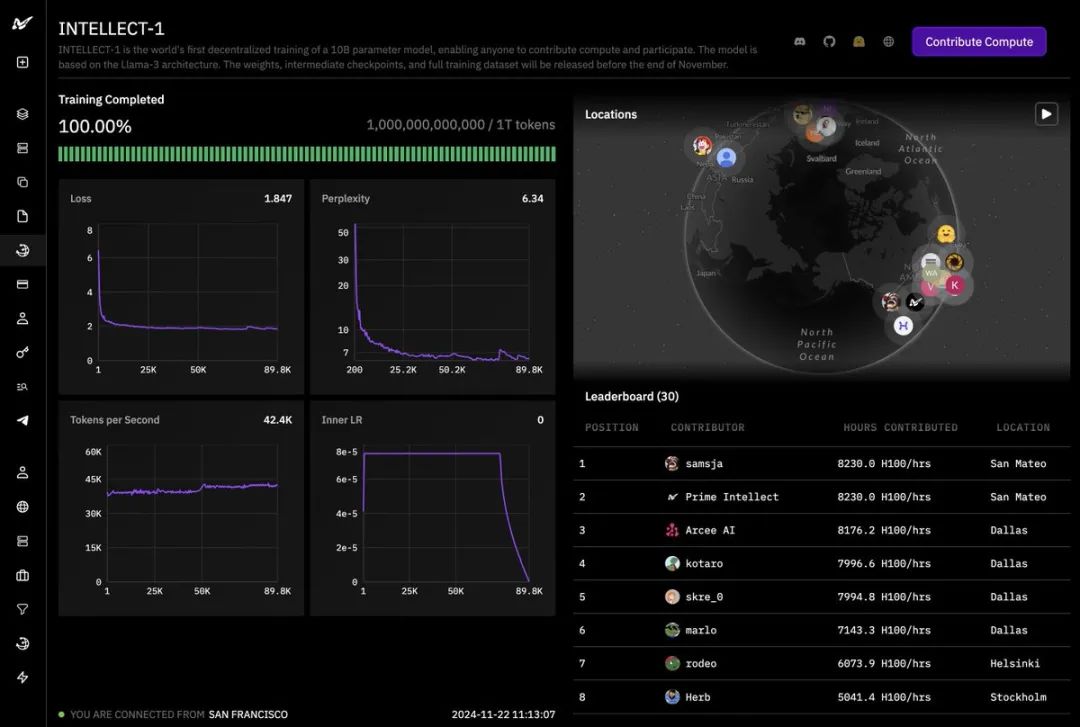Goodbye LangChain! Atomic Agents is on fire!
look as ifLangChain,CrewAIcap (a poem)AutoGenSuch frameworks are popular by providing high-level abstractions for building AI systems. However, many developers, including myself, have found that these tools do more harm than good, often adding unnecessary complexity and frustration to the development process.
go intoAtomic Agents- - A modular, streamlined framework designed to eliminate the hassles associated with existing AI development tools.Atomic Agents is based on reliable programming paradigms such as Input-Process-Output (IPO) modelcap (a poem)atomicityconcept, providing a fresh approach that prioritizes simplicity, flexibility, and developer control.
In this article, we'll take a closer look at why Atomic Agents was created, the programming paradigm it uses, and how it stands out from the crowd. Take a look at Atomic Agents with code samples and real-world examples, and if you've ever thought that LangChain was too complicated, take a look at it together!
Problems with existing AI frameworks
When I first started experimenting withLangChainAt the time, I was very interested in it simplifying AI agent development. However, it's not actually that simple.
Aside from the complexity of classes and methods, the developers of LangChain do not seem to understand the practical challenges of AI development, perhaps valuing theoretical elegance more than real-world usability. Excessive abstraction not only makes development more difficult, it also makes it opaque.
Magic Illusions in CrewAI and AutoGen
Likewise.CrewAIcap (a poem)AutoGenFrameworks such as these also attempt to provide "magical" solutions by automating complex tasks. The idea of deploying swarms of AI agents to handle everything autonomously is tempting, but in practice, these tools often don't work properly half the time. They over-promise and under-deliver in practice, leaving developers overwhelmed with unpredictable behavior and lack of control.
These frameworks blur the underlying processes, making it difficult to debug or customize features. The result is that these tools are more of a black box than a useful framework - not ideal when developing applications that require reliability and maintainability.
The Overcommitment Function: Frequently Asked Questions
A frequent problem with these frameworks is the tendency toOvercommitment function. Some companies and tools claim to offer solutions that are close to AGI (Artificial General Intelligence), but if you've had a long career related to the field of AI, you'll realize that we're not there yet. Hype often leads to unrealistic expectations, and when these tools inevitably fall short, developers have to face the consequences.
Need a better way
After wrestling with these setbacks, it became clear to us that we needed a framework like this:Elimination of unnecessary complexityand abstraction layers:
- Elimination of unnecessary complexityand abstraction layers.
- Provide developers with total control, without hiding key functionality behind opaque interfaces.
- Follow reliable, time-tested programming paradigms, improving maintainability and scalability.
- Built by developers, for developers, understand the practical challenges faced in AI development.
This realization has led toAtomic AgentsThe birth of.
Introduction to Atomic Agents
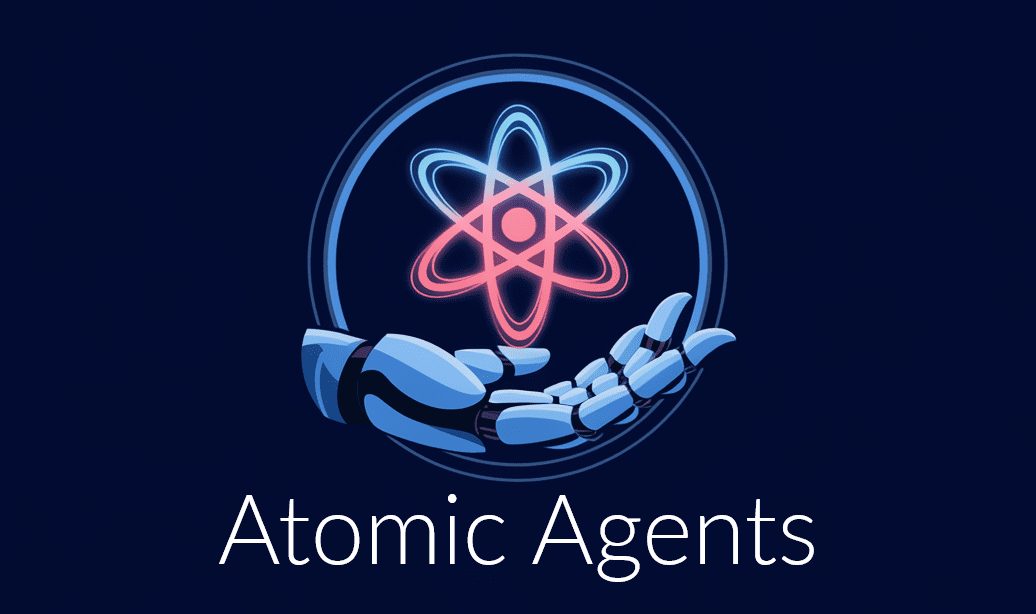
Atomic Agents Logo
Atomic Agentsis an open source framework designed to be as lightweight, modular and composable as possible. It follows theInput-Processing-Output (IPO) modelcap (a poem)atomicityprinciples, ensuring that each component is single-purpose, reusable and interchangeable.
Why do Atomic Agents exist?
Atomic Agents was created to fill in the gaps of existing frameworks. It aims to
- By providing clear, manageable components.Simplifying Artificial Intelligence DevelopmentThe
- Eliminate redundant complexity that plagues other frameworksand unnecessary abstractions.
- Promoting flexibility and coherence, allowing developers to focus on building effective AI applications rather than getting tangled up with the framework itself.
- Encouraging best practices, encouraging developers to adopt a modular, maintainable code structure.
By adhering to these principles, Atomic Agents enables developers to build AI agents and applications that are both powerful and easy to manage.
The Programming Paradigm Behind Atomic Agents
Input-Process-Output (IPO) model
At the heart of Atomic Agents is theInput-Process-Output (IPO) model, which is a basic programming paradigm that divides program structure into three distinct phases:
- Input: Receive data from users or other systems.
- Process: Processing or conversion of data.
- Output: The processed data are presented as results.
This model is clear and concise and makes it easier to understand and manage data flow in an application.
In Atomic Agents, this translates into
- Input Schemas: Use Pydantic to define the structure of the input data and validation rules.
- Processing Components: Agents and tools that perform operations on data.
- Output Schemas: Ensure that the results are structured and validated before they are returned.
Atomicity: functional building blocks
atomicityThe concept is to break down a complex system into its smallest functional parts or "atoms". Each atom
- Having a single responsibilityto make it easier to understand and maintain.
- Reusable, allowing components to be used in different parts of the application or even in different projects.
- Can be combined with other atomic components to build more complex functionality.
By focusing on atomic components, Atomic Agents facilitates a modular architecture for increased flexibility and scalability.
How Atomic Agents Work
ingredient
In Atomic Agents, the AI agent consists of several key components:
- system alert: Define the behavior and purpose of the agent.
- input mode: Specifies the expected structure of the input data.
- output mode: Defines the structure of the output data.
- random access memory (RAM): Stores conversation history or status information.
- context-sensitive programming: Injects a dynamic context into the system prompt at runtime.
- artifact: External functions or application program interfaces available to the agent.
Each component is designed to be modular and interchangeable and follows the principles of separation of concerns and single responsibility.
Modularity and composability
Modularity is at the heart of Atomic Agents. By designing components to be self-contained and focused on a single task, developers can
- Changing tools or agents, without affecting the rest of the system.
- Fine-tuning individual components, such as system prompts or modes, without creating unintended side effects.
- By adjusting the input and output modes, theAgents and ToolsSeamlessly strung together.
This modular approach not only makes development more manageable, but also enhances the maintainability and scalability of AI applications.
Providing context: enhancing flexibility
context-sensitive programmingAllow agents to include dynamic data in system prompts and enhance responses based on the latest information.
Example:
from atomic_agents.lib.components.system_prompt_generator import SystemPromptContextProviderBase
class SearchResultsProvider(SystemPromptContextProviderBase):
def __init__(self, title: str, search_results: List[str]):
super().__init__(title=title)
self.search_results = search_results
def get_info(self) -> str:
return "n".join(self.search_results)
# 向代理注册上下文提供程序
agent.register_context_provider("search_results", search_results_provider)
By injecting real-time data into the agent's context, you can create more dynamic and responsive AI applications.
Chaining of patterns and agents
Atomic Agents simplifies the process of chaining agents and tools by adjusting input and output modes.
Example: Suppose you have a query generation agent and a web search tool. By setting the output pattern of the query agent to match the input pattern of the search tool, you can chain them together directly.
from web_search_agent.tools.searxng_search import SearxNGSearchTool # Initialize the query agent query_agent = BaseAgent( BaseAgentConfig( # ... other configurations ... output_schema=SearxNGSearchTool.input_schema, # Align output schema ) )
This design improves reusability and flexibility, allowing for easy replacement of components or expansion of functionality.
Reasons why Atomic Agents are better than other products
Elimination of unnecessary complexity
Unlike frameworks that introduce multiple layers of abstraction, Atomic Agents keeps it simple and straightforward. Each component has a clear purpose and there is no hidden magic to be broken.
- transparent architecture: You can fully understand how data flows through an application.
- Easier debugging: Identifying and fixing problems is made easier by reduced complexity.
- Lowering the learning curve: Developers can get started quickly without having to understand complex abstract concepts.
Built by developers, for developers
Atomic Agents is designed with real-world development challenges in mind. It uses tried-and-true programming paradigms and prioritizes developer experience.
- Solid programming foundation: By following the IPO model and atomicity, the framework encourages best practices.
- Flexibility and control: Developers are free to customize and extend components as needed.
- community-driven: As an open source project, it invites contributions and collaboration from the developer community.
Stand-alone and reusable components
Each part of Atomic Agents can run independently, thus promoting reusability and modularity.
- Can be tested in isolation: Components can be individually tested to ensure reliability prior to integration.
- Reusable across projects: Atomic components can be used in different applications, saving development time.
- Easier maintenance: The isolation feature reduces the impact of changes and simplifies updates.
Building a Simple Artificial Intelligence Agent
We will build an AI agent that responds to user queries and asks follow-up questions.
Step 1: Define custom input and output modes
from pydantic import BaseModel, Field from typing import List from atomic_agents.agents.base_agent import BaseIOSchema class CustomInputSchema(BaseIOSchema): chat_message: str = Field(..., description="The user's input message.") class CustomOutputSchema(BaseIOSchema): chat_message: str = Field(..., description="The agent's response message.") suggested_questions: List[str] = Field(..., description="Suggested follow-up questions.")
Step 2: Setting up system alerts
from atomic_agents.lib.components.system_prompt_generator import SystemPromptGenerator system_prompt_generator = SystemPromptGenerator( background=[ "You are a knowledgeable assistant that provides helpful information and suggests follow-up questions." ], steps=[ "Analyze the user's input to understand the context and intent.", "Provide a relevant and informative response.", "Generate 3 suggested follow-up questions." ], output_instructions=[ "Ensure clarity and conciseness in your response.", "Conclude with 3 relevant suggested questions." ] )
Step 3: Initialize the agent
from atomic_agents.agents.base_agent import BaseAgent, BaseAgentConfig import instructor import openai # Initialize the agent agent = BaseAgent( config=BaseAgentConfig( client=instructor.from_openai(openai.OpenAI(api_key='YOUR_OPENAI_API_KEY')), model="gpt-4", system_prompt_generator=system_prompt_generator, input_schema=CustomInputSchema, output_schema=CustomOutputSchema ) )
Step 4: Use of proxies
user_input = "Can you explain the benefits of using Atomic Agents?" input_data = CustomInputSchema(chat_message=user_input) response = agent.run(input_data)
print(f"Agent: {response.chat_message}")
print("Suggested questions:")
for question in response.suggested_questions:
print(f"- {question}")
Expected Output:
Agent: Atomic Agents simplifies AI development by providing modular, reusable components based on solid programming paradigms like the IPO model and atomicity.
Suggested questions:
- How does Atomic Agents compare to other AI frameworks?
- Can you provide an example of building an agent with Atomic Agents?
- What are the key features of Atomic Agents that enhance productivity?
Integration tools and context providers
Suppose we want the agent to perform a web search based on a user query.
Step 1: Download and setup SearxNGSearchTool
utilization Atomic Assembler CLI, we can download the search tool:
atomic
Select SearxNGSearchTool from the menu and follow the instructions to install the dependencies.
Step 2: Integration of search tools
from web_search_agent.tools.searxng_search import SearxNGSearchTool, SearxNGSearchToolConfig # 初始化搜索工具 search_tool = SearxNGSearchTool(config=SearxNGSearchToolConfig(base_url="http://localhost:8080"))
Step 3: Update the agent to use the tool
We can modify the agent to decide when to use the search tool based on user input.
from typing import Union class OrchestratorOutputSchema(BaseModel): tool: str = Field(..., description="The tool to use: 'search' or 'chat'") parameters: Union[SearxNGSearchTool.input_schema, CustomInputSchema] = Field(..., description="Parameters for the selected tool.") # 修改代理逻辑以输出 OrchestratorOutputSchema # ... # 执行选定的工具 if response.tool == "search": search_results = search_tool.run(response.parameters) # 处理检索结果 else: # 使用之前的聊天代理 pass
Step 4: Use the context provider with search results
class SearchResultsProvider(SystemPromptContextProviderBase):
def __init__(self, search_results):
super().__init__(title="Search Results")
self.search_results = search_results
def get_info(self) -> str:
return "n".join(self.search_results)
# After obtaining search results
context_provider = SearchResultsProvider(search_results)
agent.register_context_provider("search_results", context_provider)
With this integration, agents can provide responses based on real-time web search data.
Atomic Assembler CLI: Easy Management Tools
A distinguishing feature of Atomic Agents isAtomic Assembler CLIThis is a command line tool that simplifies tool and agent management.
Inspired by some modern Tailwind libraries like shadcn, where instead of installing components as dependencies, you take ownership of them in your own source code.
This means that instead of installing the tool as a dependency using pip, we will copy it into our project. There are two ways to do this:
- Download the tool manually, or copy/paste the source code from the Atomic Agents GitHub repository and drop them into the
atomic-forgefolder. - We will use the Atomic Assembler CLI to download the tool.
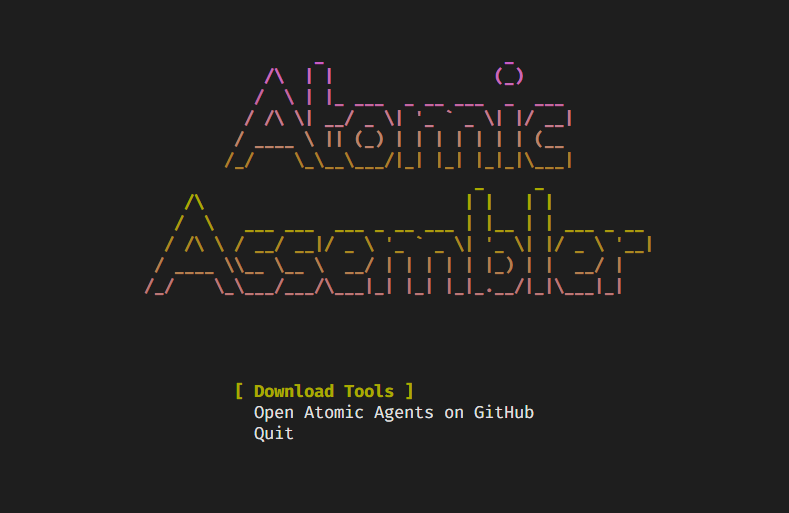
Atomic Agents
Key Features
- Download and management tools: Easily add new tools to projects without having to manually copy or resolve dependencies.
- Avoiding dependency clutter: Keep your project lean by installing only the tools you need.
- Easy modification tool: Each tool is independent, with its own tests and documentation.
- Direct access tools: If you wish, you can manually manage the tools by accessing the Tools folder.
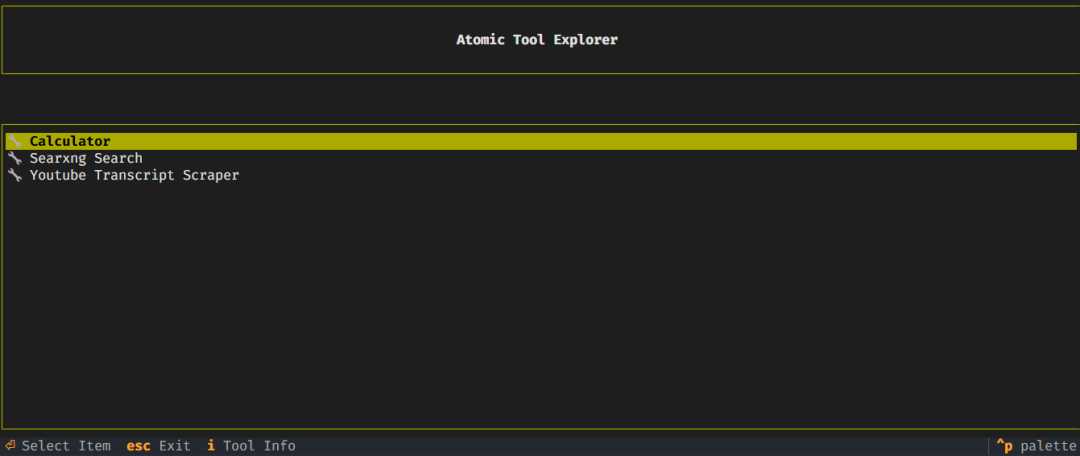
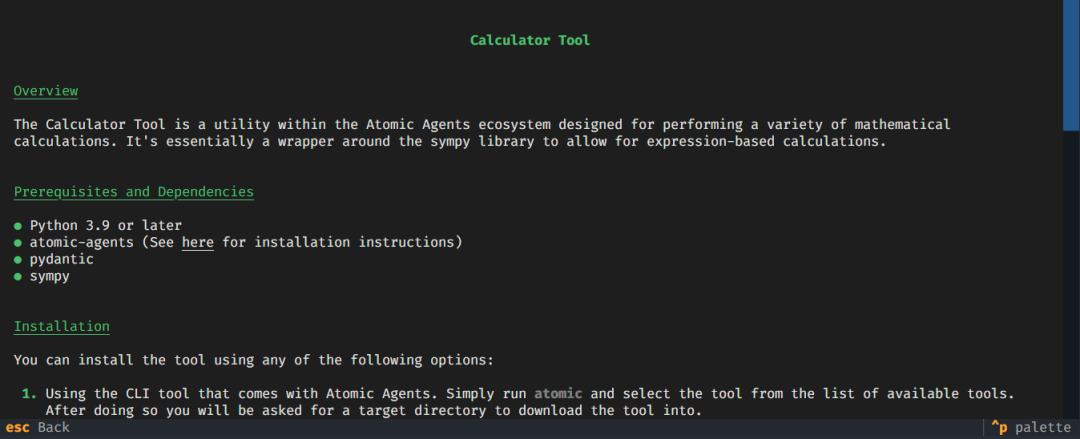
put at the end
Atomic Agents brings a much-needed shift to the field of AI development by prioritizing simplicity, modularity, and developer control. By adopting reliable programming paradigms such as the Input-Process-Output model and atomicity, it solves many of the problems developers face when using LangChain, CrewAI, and AutoGen The frustrations encountered in existing frameworks such as the
With Atomic Agents, you can
- Elimination of unnecessary complexitythat focuses on building effective AI applications.
- Total controleach component of the system.
- Easily replace or modify componentswithout interrupting the entire application.
- Leveraging Modularity and ReusabilityImprove efficiency and maintainability.
If you're tired of wrestling with overly complex frameworks that overpromise and underdeliver, it's time to give Atomic Agents a try.
© Copyright notes
Article copyright AI Sharing Circle All, please do not reproduce without permission.
Related posts

No comments...



